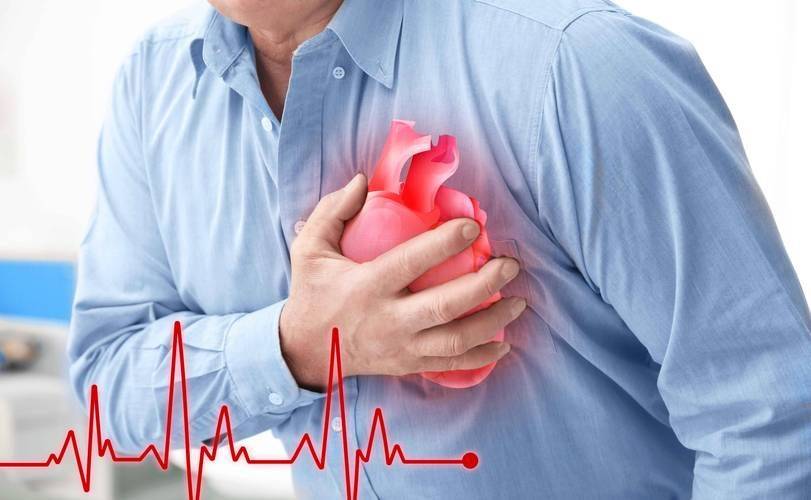Men’s health issues often pose a greater risk than those faced by women. According to data from the World Health Organization (WHO), men globally have a shorter life expectancy than women, and their mortality rates exceed women’s across the top ten causes of death. What drives this disparity? Consider this scenario: 35-year-old Tom recently noticed dry, cracked skin at the base of his pinkie, even exposing raw flesh. When urged to see a doctor, he brushed it off, saying, “It’s nothing—probably just dry weather. It’ll clear up soon.” Days turned into weeks, yet he still didn’t seek care. This “tough it out” attitude is all too common among men, revealing a deeper root of the men’s health crisis.
The Gap in Health Awareness and Doctor Visits
Studies show women are far more likely to seek medical help than men. A 2001 report from the U.S. Centers for Disease Control and Prevention (CDC) found that women are 33% more likely to visit a doctor. While this gap narrows with age, men’s health awareness and proactive behavior remain stubbornly low. Take 45-year-old John, for example. During a recent checkup, he discovered elevated blood pressure, but admitted, “My last physical was five years ago—I didn’t feel anything serious.” This tendency to ignore warning signs is widespread among men.
Experts tie this behavior to cultural norms. Dr. William Pollack, Assistant Clinical Professor of Psychiatry at Harvard Medical School, explains, “Society expects men to project ‘toughness’ and hide discomfort, leading them to suppress physical or emotional issues until they’re undeniable.” This cultural pressure heightens health risks and causes many men to miss critical early intervention opportunities.
The Five Major Health Threats to Men
Below are the top five health threats to men, enriched with detailed backgrounds, symptoms, diagnostic methods, treatment options, and practical tips.
1. Heart Disease: The Silent Top Killer
Background: Heart disease tops the list as the leading cause of death for men worldwide. Per the American Heart Association (AHA), one in four men has some form of cardiovascular condition, with male deaths nearly doubling those of women. Alarmingly, men develop symptoms about 10 years earlier than women, often in their 40s or 50s. Risk factors include age, family history, smoking, high blood pressure, high cholesterol, and a sedentary lifestyle.
Symptoms: Chest pain, shortness of breath, fatigue, pain in the arms or jaw, or sometimes no symptoms at all (a “silent heart attack”).
Diagnosis: Electrocardiogram (ECG), echocardiogram, stress tests, and blood tests (e.g., troponin levels).
Treatment: Medications (statins, aspirin), procedures (stent placement), bypass surgery, and lifestyle changes.

Real Case: At 50, Mike, a smoker with little exercise, landed in the ER with chest tightness. Tests revealed severe coronary blockages. His doctor noted, “An earlier checkup could’ve avoided surgery.”
Prevention Tips:
- Diet: Eat fiber-rich foods (oats, veggies) and cut back on saturated and trans fats.
- Exercise: Aim for 150 minutes of moderate aerobic activity weekly, like brisk walking or swimming.
- Quit Smoking: One year after quitting, your heart disease risk drops by 50%.
2. Stroke: A Lurking Danger
Background: Stroke ranks as the third-leading cause of death in the U.S., with men 25% more likely to be affected than women, particularly under age 45. High blood pressure is the top risk factor, followed by diabetes, smoking, and obesity. The American Stroke Association reports nearly 800,000 strokes annually in the U.S., with men disproportionately impacted.
Symptoms: Sudden numbness on one side, trouble speaking, blurred vision, severe headache, or unsteady walking.
Diagnosis: CT scan, MRI, or angiography.
Treatment: Clot-busting drugs (tPA) in emergencies, long-term anticoagulants, and rehabilitation.
Expert Insight: Dr. James Grotta of the American Academy of Neurology says, “Controlling blood pressure is the most effective way to prevent stroke, yet many men don’t even know they have hypertension.”
Prevention Tips:
- Monitor Blood Pressure: Check monthly—aim for below 120/80 mmHg.
- Lose Weight: Obesity ups stroke risk; keep BMI between 18.5-24.9.
- Diet Boost: Add fish oil or flaxseed oil for omega-3 fatty acids.
3. Suicide: The Hidden Emotional Crisis
Background: Suicide is a silent killer among men, with rates four times higher than women, peaking in middle age (35-54), per the National Institute of Mental Health (NIMH). Society’s demand for men to “stay strong” often masks depression, leaving it undiagnosed or misunderstood.
Symptoms: Persistent sadness, loss of interest, sleep issues, appetite changes, or atypical signs like anger or excessive drinking.
Diagnosis: Psychological evaluations and tools like the PHQ-9 scale.
Treatment: Therapy (e.g., cognitive behavioral therapy), antidepressants, and support groups.
Real Case: At 42, David turned to heavy drinking under work stress. His family saw it as a temper issue—until a suicide attempt revealed severe depression.
Prevention Tips:
- Express Emotions: Talk to friends or call a helpline (e.g., U.S. National Suicide Prevention Lifeline: 1-800-273-8255).
- Build Support: Join hobby groups to combat isolation.
- Seek Help: Consult a therapist if low moods persist beyond two weeks.
4. Lung Cancer: Tobacco’s Deadly Toll
Background: Lung cancer is the deadliest cancer for men, with 90% of cases linked to smoking. Though smoking rates have dropped, it remains a top threat. The American Cancer Society (ACS) notes male lung cancer deaths outpace women’s by 50%. Secondhand smoke and pollution also contribute.

Symptoms: Persistent cough, chest pain, shortness of breath, coughing up blood, or unexplained weight loss.
Diagnosis: Chest X-ray, CT scan, and biopsy.
Treatment: Surgery, chemotherapy, radiation, or targeted therapies.
Research Insight: The National Institute on Aging (NIA) states that 10 years after quitting, lung cancer risk halves compared to smokers.
Prevention Tips:
- Quit Smoking: Use nicotine replacement or consult quit-smoking specialists.
- Environment: Steer clear of secondhand smoke and industrial zones.
- Diet: Boost antioxidants with berries and spinach.
5. Prostate Cancer: The Quiet Assassin
Background: Prostate cancer is the most common cancer in men and the second-deadliest after lung cancer. Risk spikes after 50, especially with a family history. The American Cancer Society says early detection boosts cure rates to nearly 100%.
Symptoms: Often none early on; later, frequent urination, urgency, pain, or blood in urine.
Diagnosis: PSA blood test, digital rectal exam (DRE), ultrasound, or biopsy.
Treatment: Surgery (prostatectomy), radiation, hormone therapy, or active surveillance.
Expert Advice: Dr. John Smith from Cancer Research UK advises, “Annual PSA tests after 50 are the best way to catch prostate cancer early.”

Prevention Tips:
- Diet: Eat tomatoes (lycopene-rich), broccoli, and green tea.
- Screening: Start annual PSA tests at 50, or 40 with family history.
- Exercise: Stay active to lower cancer risk.
Turning the Tide
The root of men’s health crises isn’t any single disease—it’s the lack of early monitoring. As one doctor puts it, “Skip cholesterol checks at 20, ignore blood pressure at 30, overlook blood sugar at 40, and by 50, diseases may pile up.” Boosting health awareness, increasing doctor visits, and sticking to prevention are vital to living longer.
Practical Resources:
- American Heart Association: Heart disease prevention and recovery guides.
- American Stroke Association: Stroke symptom recognition and first aid.
- National Institute of Mental Health: Mental health support tools.
- American Cancer Society: Cancer screening and treatment info.
Conclusion
By delving into disease backgrounds, symptoms, treatments, expert opinions, real cases, and actionable steps, this article offers a robust roadmap for men’s health. Better health isn’t out of reach—it starts with paying attention, right now.













